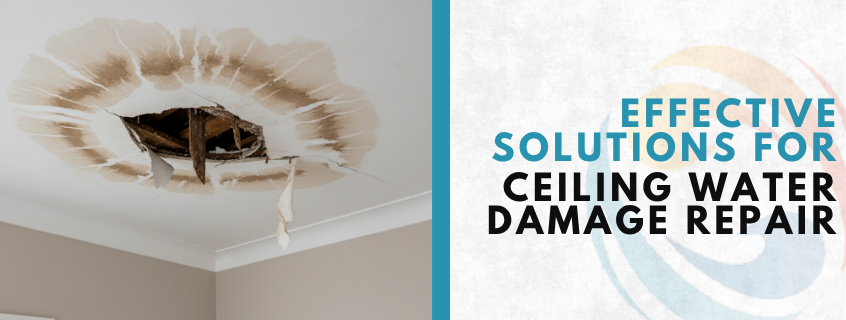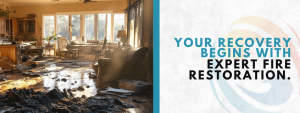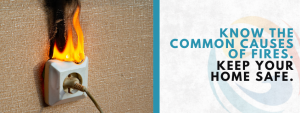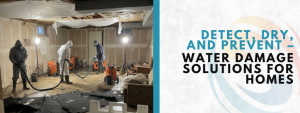Water leaking from above is never something homeowners want to deal with. Whether it’s a slow drip from a pipe or a roof leak after a storm, ceiling damage can become a costly problem if left unaddressed. Beyond the obvious stains and sagging drywall, unchecked moisture can weaken structures, cause mold growth, and lower your home’s value. Learning how to approach ceiling water damage repair quickly and thoroughly will save you time, money, and stress. If you live in Agoura Hills, knowing where to turn for fast solutions is even more important.
Early Signs That Your Ceiling May Be Compromised
Catching damage early makes the repair process far easier. Here are the most common indicators that your ceiling may need immediate attention:
- Discolored or brown water spots that spread across paint or plaster
- Bubbles in paint or wallpaper that signal trapped moisture
- Moldy or musty odors that suggest hidden water pockets
- Sagging drywall or plaster that looks soft or swollen
- Visible dripping or condensation that shows the leak is active
If you’ve wondered how to fix ceiling water stains, spotting these early signs of water damage ceiling is the first step toward a lasting repair.
What Causes Water to Damage a Ceiling?
Water damage to ceilings can come from several different sources, and identifying the cause is the first step toward lasting repair. Roof problems such as missing shingles, cracked flashing, or storm damage allow rain to seep inside and stain ceilings. Clogged gutters are another common culprit, forcing water to overflow and leak into walls and ceilings. Inside the home, plumbing issues like leaking pipes, burst supply lines, or even a leaky faucet left unaddressed can eventually cause water to spread and damage ceilings. HVAC systems can also contribute when condensate lines or drip pans fail. In some cases, malfunctioning fire sprinklers saturate ceiling materials and require immediate professional attention.
Step-by-Step Guide to Repairing a Water-Damaged Ceiling
Contain and Control the Problem
Before making repairs, stop further water from entering.
- Shut off the water supply if a plumbing issue is suspected.
- Place buckets or tarps under drips to protect the flooring and furniture.
- Release water from sagging areas by making a small puncture to drain it safely.
Dry the Area Completely
Ceiling materials need to be fully dry before any repair can last.
- Use fans and dehumidifiers to speed evaporation.
- Open windows and doors if weather permits.
- Remove insulation or drywall that cannot be salvaged.
Repair or Replace Damaged Materials
Once the area is dry, assess the severity.
- Minor damage – Cut out stained drywall, replace with a fresh panel, sand, and repaint.
- Moderate damage – Replace larger drywall sections, retexture to match, and repaint the ceiling.
- Severe damage – If the ceiling structure is compromised or mold is widespread, contact a professional water damage restoration company specializing in ceiling repair.
Who to Call When You Discover Damage
When you discover ceiling water damage, it’s important to know which professional to call. Start with your insurance company, since many policies cover water damage repairs and may help offset costs. If the problem comes from your roof, a roofing contractor can inspect and repair the damage to prevent future leaks. When pipes, fixtures, or supply lines are responsible, a licensed plumber is the right expert to handle the issue safely. For widespread or recurring problems, restoration specialists offer complete solutions. Simply search water damage repair near me in Agoura Hills to connect with trusted local experts.
Preventing Future Ceiling Damage
Regular maintenance, preventive steps, and a clear emergency plan reduce your chances of dealing with major repairs.
- Schedule roof inspections at least once a year.
- Keep gutters and downspouts clear of leaves and debris.
- Insulate pipes in colder climates to prevent bursting.
- Install leak detectors or moisture sensors near plumbing and HVAC systems.
- Address minor leaks right away instead of waiting until they worsen.
Quick Checklist for Homeowners
Here’s a simple action plan if you ever notice watermarks overhead:
- Identify and stop the source of water.
- Move valuables and furniture out of harm’s way.
- Drain sagging areas safely.
- Dry the space with fans or professional equipment.
- Repair damaged drywall and repaint.
- Call experts in Agoura Hills if the damage is severe or recurring.
Protecting Your Home from Ceiling Water Damage
Facing a wet, sagging, or stained ceiling can be stressful, but quick action is the key to protecting your home. By addressing the source of the leak, drying the area thoroughly, and scheduling timely repairs, you can prevent small issues from turning into costly structural damage. Consistent maintenance, such as roof inspections, plumbing checks, and gutter cleaning, also reduces future risks. And if the problem feels overwhelming, don’t hesitate to call trusted professionals. Relying on experienced ceiling water damage repair specialists and experts in Water Damage Restoration Agoura Hills ensures your ceiling is restored properly, your home stays protected, and your peace of mind remains intact.
FAQs About Ceiling Water Damage Repair
How long does it take to repair a water-damaged ceiling?
Minor repairs may take a day, while major damage that requires drying, replacing, and painting may stretch over several days.
Can I repair a ceiling myself?
Small areas can be patched by DIY homeowners, but widespread water damage often requires professional restoration to ensure mold and structural issues are resolved.
Will my insurance cover ceiling water damage repair?
Most standard homeowner policies cover sudden water damage, like burst pipes or roof leaks, but not gradual wear-and-tear issues. Always check your policy.
What happens if I ignore water stains?
Unaddressed water damage can lead to mold growth, structural weakening, and more expensive repairs later on.







